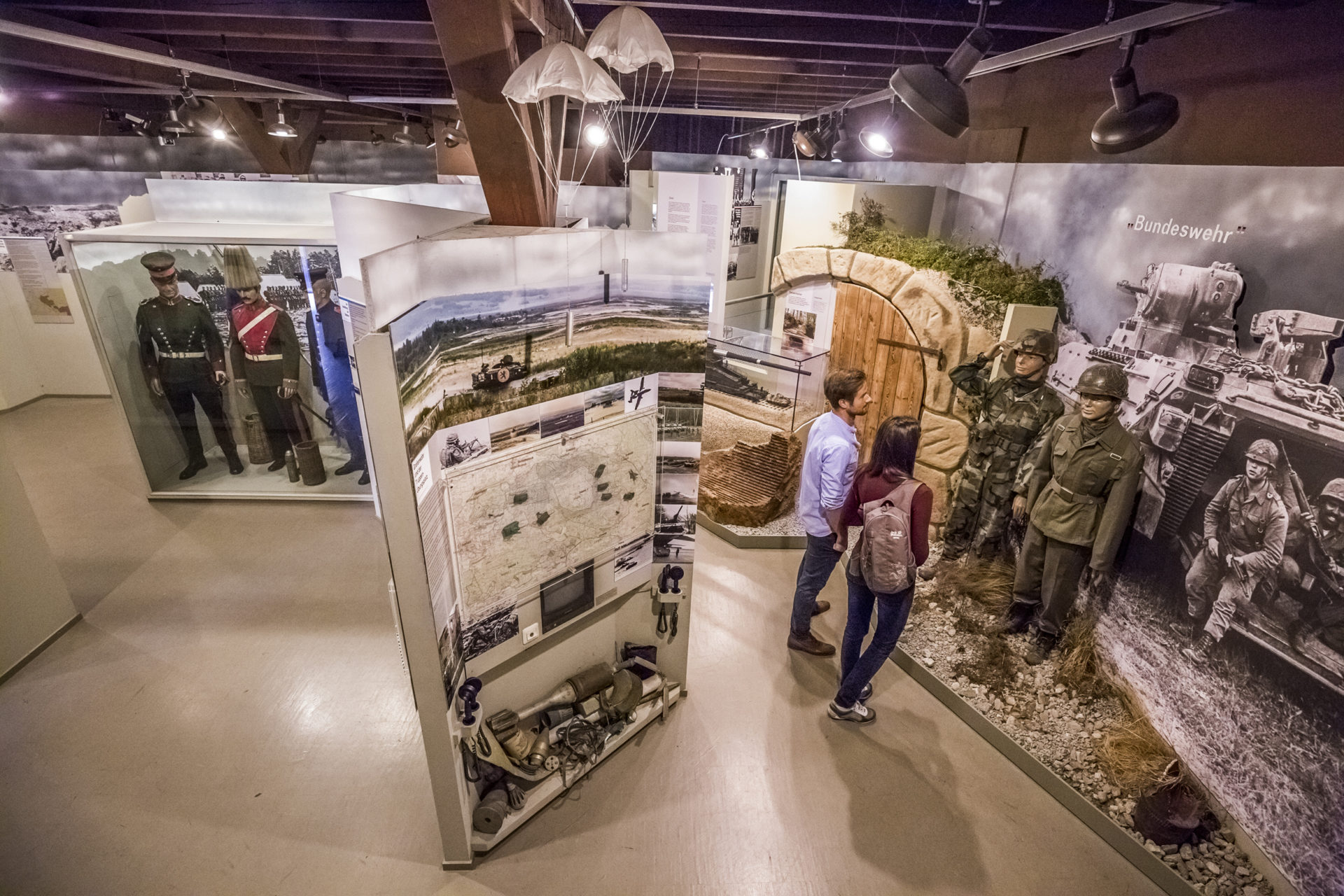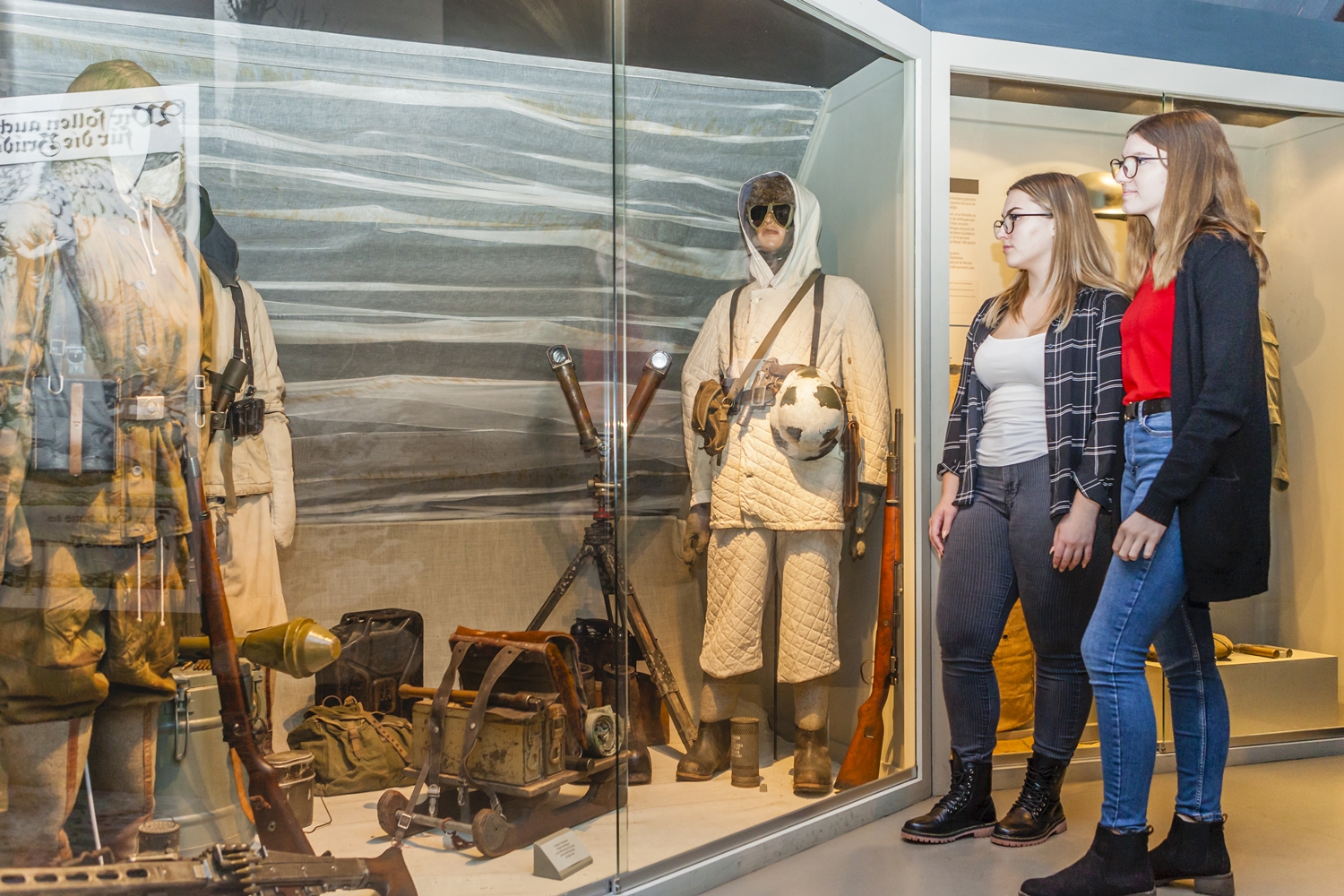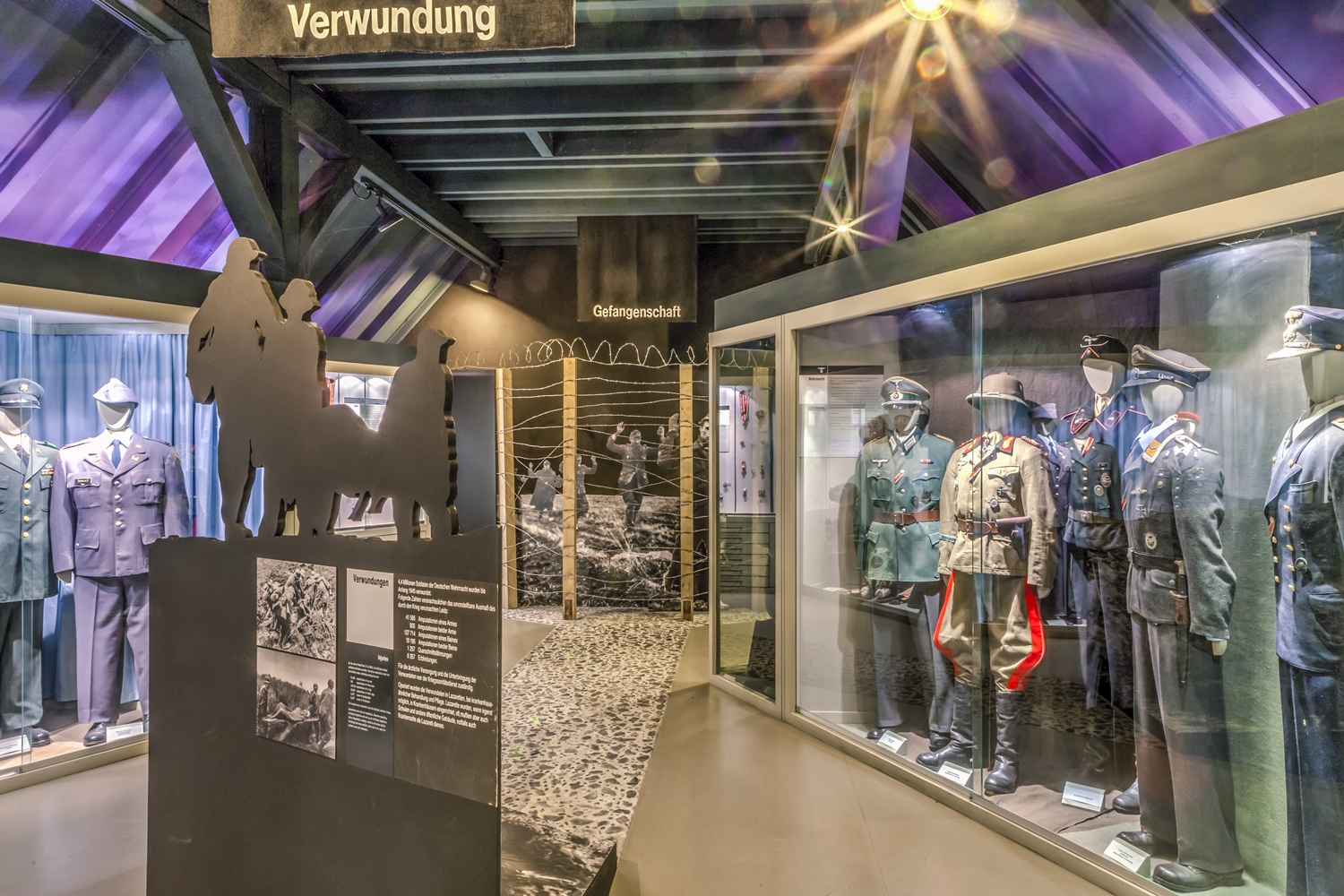The Grafenwöhr exhibition uses stagings, documentaries and video films to demonstrate in exemplary fashion the development of the training ground, which was opened in 1910 and turned the previously rather sleepy little country town of Grafenwöhr into a burning mirror of history. The military training area was founded in 1908. On 30.6.1910, with the first artillery shot, the square was put into operation.
During World War I, Grafenwoehr was the largest prison camp in Bavaria with 23,000 prisoners of war. In the 1930s, because of the Nazi armament mania, 3,500 inhabitants from 57 villages had to give up their homes for the expansion of the training area. This is documented particularly drastically in a silent film shot in the village of Haag during the resettlement in 1937-38.
Exclusively in the military section you can marvel at an original frontal Christmas tree from World War I as well as a model of Hitler’s alleged “wonder weapon” the gun Dora and an original part recovered in 2014.
World War 2 and the invasion of the Americans
During the Second World War, both the Spanish “Blue Division” and the Italian “San Marco” Division were deployed on the training ground, in addition to numerous German units (such as the Afrika Korps).
A completely new chapter in the history of the training area and thus also of the town was opened with the invasion of the Americans in 1945 and the takeover of the area by the US Army.
Soldier’s life – fascination and fate
But the Grafenwoehr Culture and Military Museum has even more attractions to offer: Under the motto “Soldier’s Life – Fascination and Fate”, the development from “colored skirt to battle dress” is documented on the upper floor of the exhibition hall. The fascination of the uniforms and weapons and the presentation of military equipment such as helmets and gas masks as well as a collection of medals are deliberately juxtaposed with the three stations “Captivity”, “Wounding” and “Death”: They are also structurally placed as a gloomy path – paved and eerily illuminated – between the showcases. This also breaks new ground in museum presentation, leading away from the usual shows of costumes and buttons.


